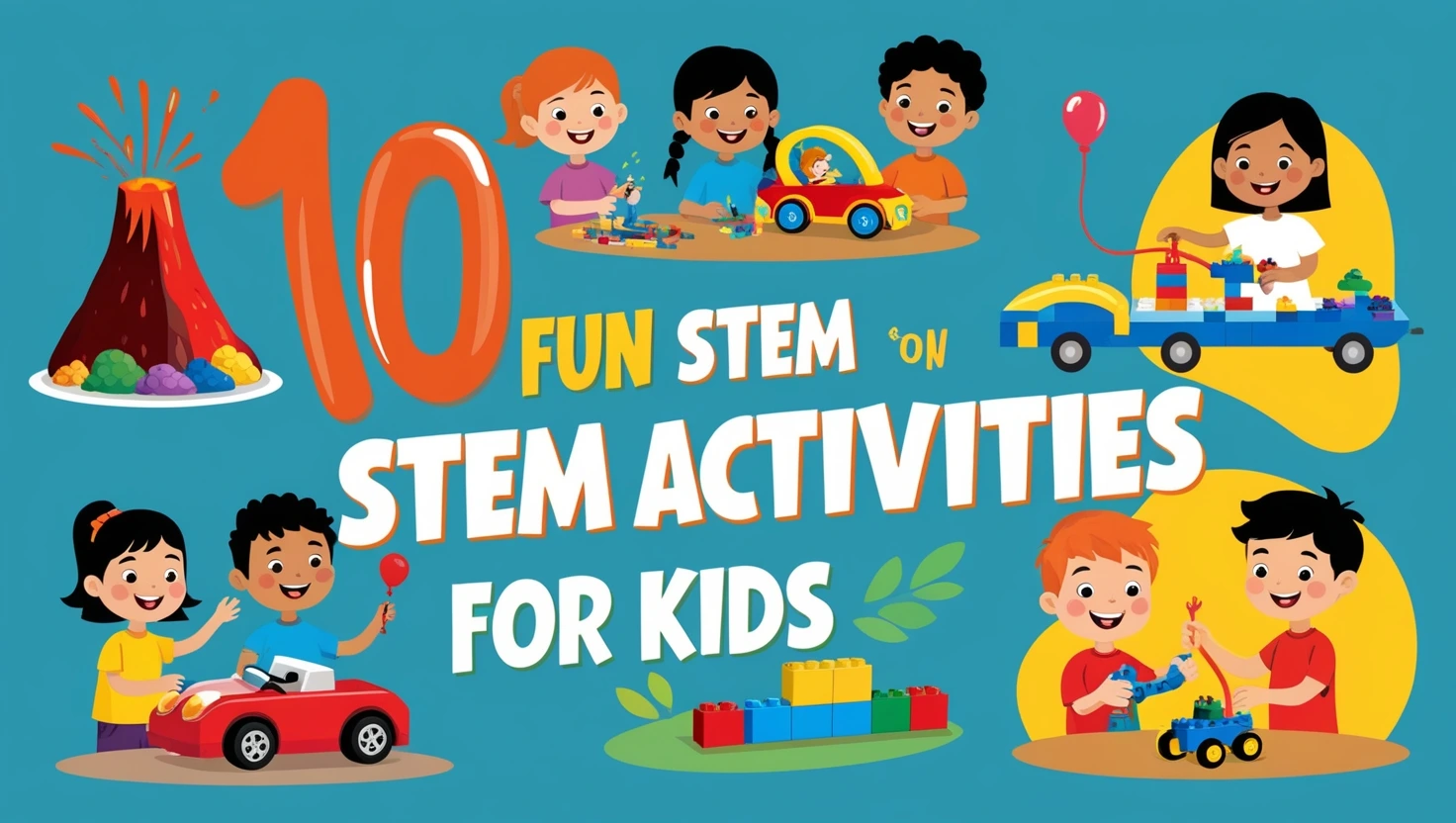STEM (Science, Technology, Engineering, and Mathematics) activities are an exciting way to encourage kids to explore, ask questions, and develop critical thinking skills. By integrating fun and engaging hands-on projects, children can develop a love for learning that lasts a lifetime. Here are ten simple STEM activities that are easy to set up and guaranteed to spark curiosity in kids.

Table of Contents
1. Build a Balloon-Powered Car
Materials Needed: Balloons, straws, bottle caps, tape, and cardboard.
Activity: Have kids design a small car using cardboard and bottle caps for wheels. Attach a straw to the back and inflate a balloon. As the air escapes, the car propels forward. This activity teaches basic engineering principles and Newton’s Third Law of Motion.
Why It Works: Kids learn how forces work and the basics of propulsion, sparking interest in physics and engineering.
2. DIY Volcano Eruption
Materials Needed: Baking soda, vinegar, dish soap, and food coloring.
Activity: Build a small volcano using clay or a plastic bottle. Mix baking soda and a few drops of dish soap inside. Pour vinegar and watch the “lava” erupt. This classic activity introduces kids to chemical reactions and the concept of acids and bases.
Why It Works: Children experience the excitement of chemical reactions firsthand, making science come alive in a visual and engaging way.
3. Egg Drop Challenge
Materials Needed: Eggs, cotton balls, straws, tape, and plastic bags.
Activity: Challenge kids to design a protective structure that prevents an egg from cracking when dropped from a height. This activity teaches problem-solving, engineering design, and creativity.
Why It Works: Encourages trial and error, design thinking, and resilience in facing engineering challenges.
4. Paper Circuit Cards
Materials Needed: Copper tape, LED lights, coin batteries, and cardstock.
Activity: Create greeting cards with built-in circuits that light up using copper tape and LEDs. This introduces children to basic electronics and circuitry.
Why It Works: Teaches kids the fundamentals of circuits, electricity flow, and the joy of creating functional designs.
5. Rainbow in a Jar
Materials Needed: Honey, dish soap, water, oil, and food coloring.
Activity: Layer different liquids in a jar to create a rainbow effect. The varying densities of the liquids create distinct layers. This activity teaches kids about density and the properties of liquids.
Why It Works: Kids visually grasp the concept of density and learn how different materials interact based on their properties.
6. Straw Rocket Launch
Materials Needed: Straws, paper, tape, and scissors.
Activity: Create small paper rockets and launch them by blowing through a straw. This activity demonstrates the principles of aerodynamics and force.
Why It Works: Engages kids in physics by helping them understand force, motion, and angles while having fun.
7. Lego Bridge Building
Materials Needed: Legos or building blocks.
Activity: Challenge kids to build a bridge using Legos that can support a set weight. This activity enhances engineering skills and structural design understanding.
Why It Works: Enhances problem-solving skills and allows kids to explore architecture and structural engineering through hands-on experimentation.
8. Floating and Sinking Experiment
Materials Needed: Various small objects (coins, corks, plastic toys), a large bowl of water.
Activity: Ask kids to predict which objects will float and which will sink, then test their hypotheses. This simple activity teaches the principles of buoyancy and density.
Why It Works: Builds observational skills and introduces kids to fundamental physics concepts in an easy-to-understand way.
9. Coding with Simple Games
Materials Needed: Computer or tablet with coding software like Scratch or Tynker.
Activity: Encourage kids to design simple games or animations using basic coding platforms. This activity builds problem-solving skills and introduces the fundamentals of programming.
Why It Works: Prepares kids for the digital age by teaching programming logic and fostering computational thinking.
10. Plant Growth Experiment
Materials Needed: Seeds, soil, cups, and water.
Activity: Plant seeds in different conditions (light, dark, dry, wet) and observe how they grow. This activity teaches kids about plant biology and the scientific method.
Why It Works: Encourages kids to understand biology through observation and experimentation, fostering curiosity about nature.
Conclusion
STEM activities don’t have to be complex or expensive to captivate a child’s imagination. These ten simple and engaging projects not only entertain but also provide valuable learning experiences. By incorporating STEM into everyday play, parents and educators can inspire the next generation of innovators and problem solvers.
Read more:-
महाभारत और भगवद गीता से बच्चों को सिखाएं नैतिकता और कर्तव्य का महत्व
Ancient Indian Scriptures: Teaching Kids the Secrets to a Happy Life


